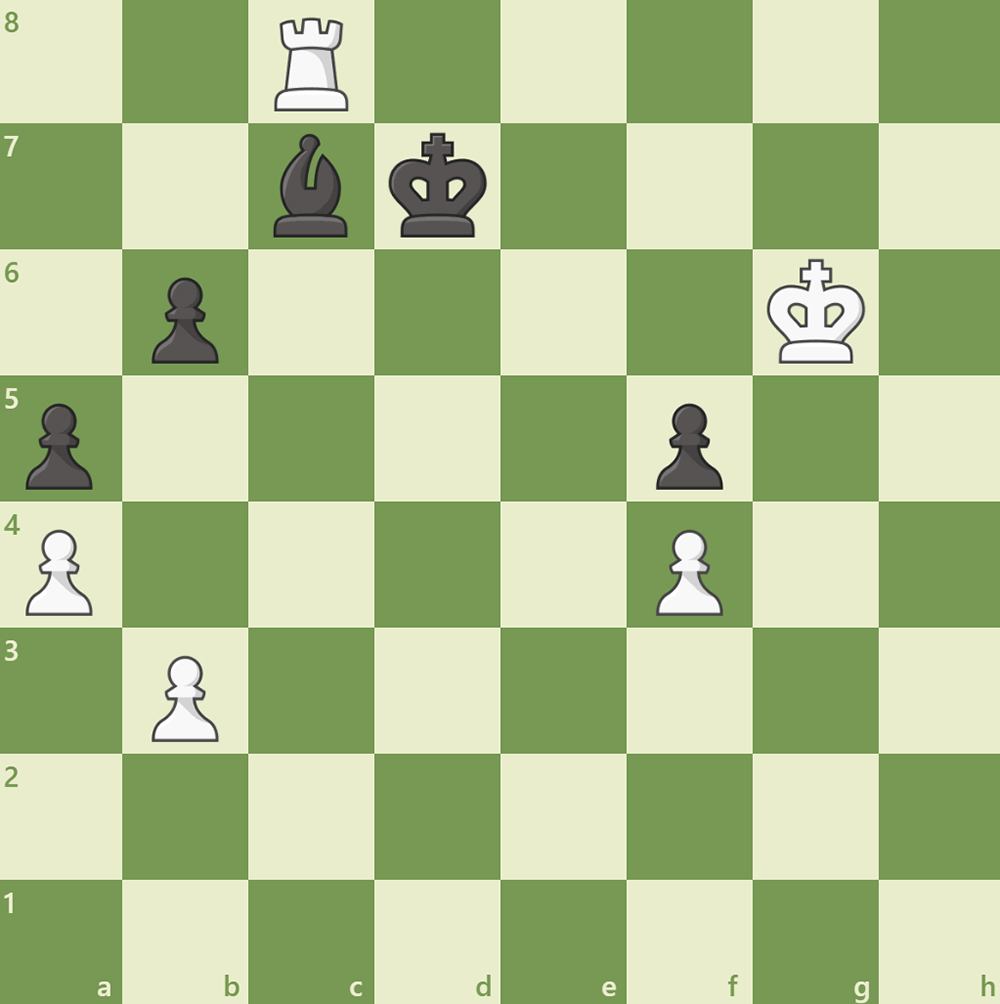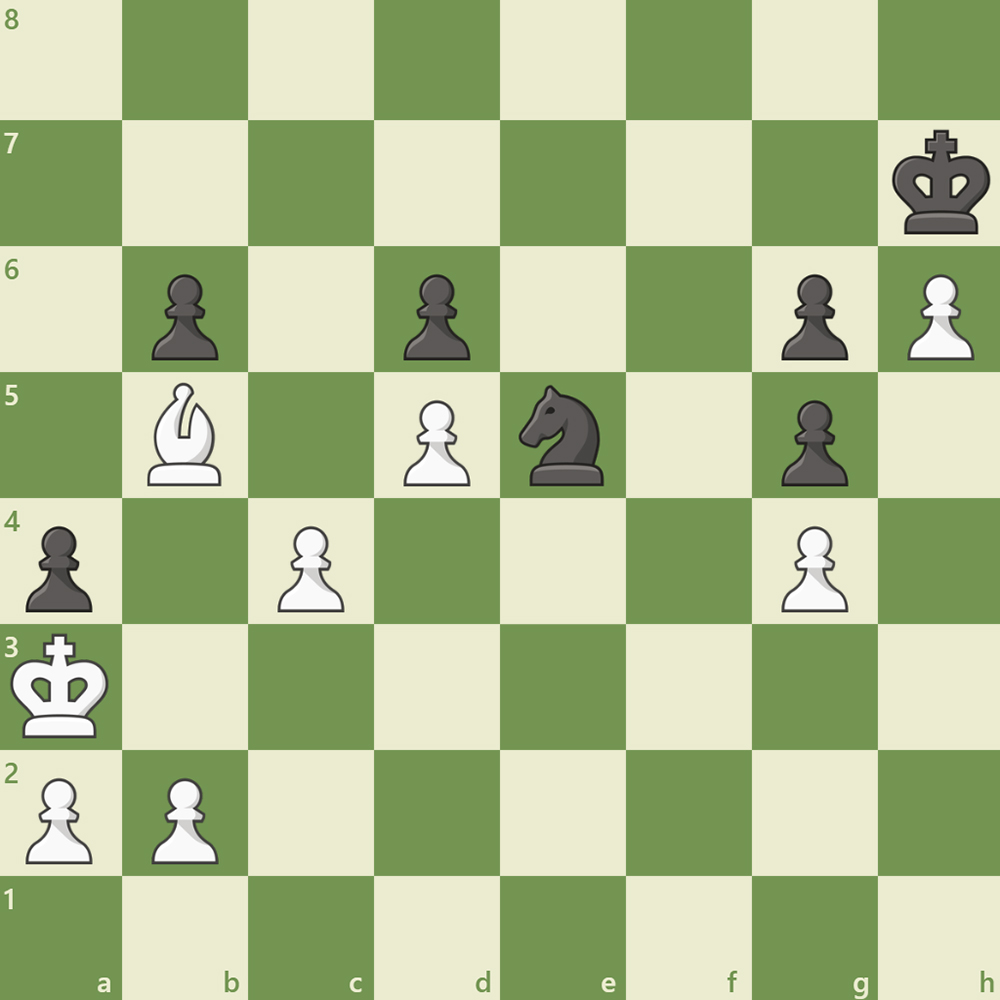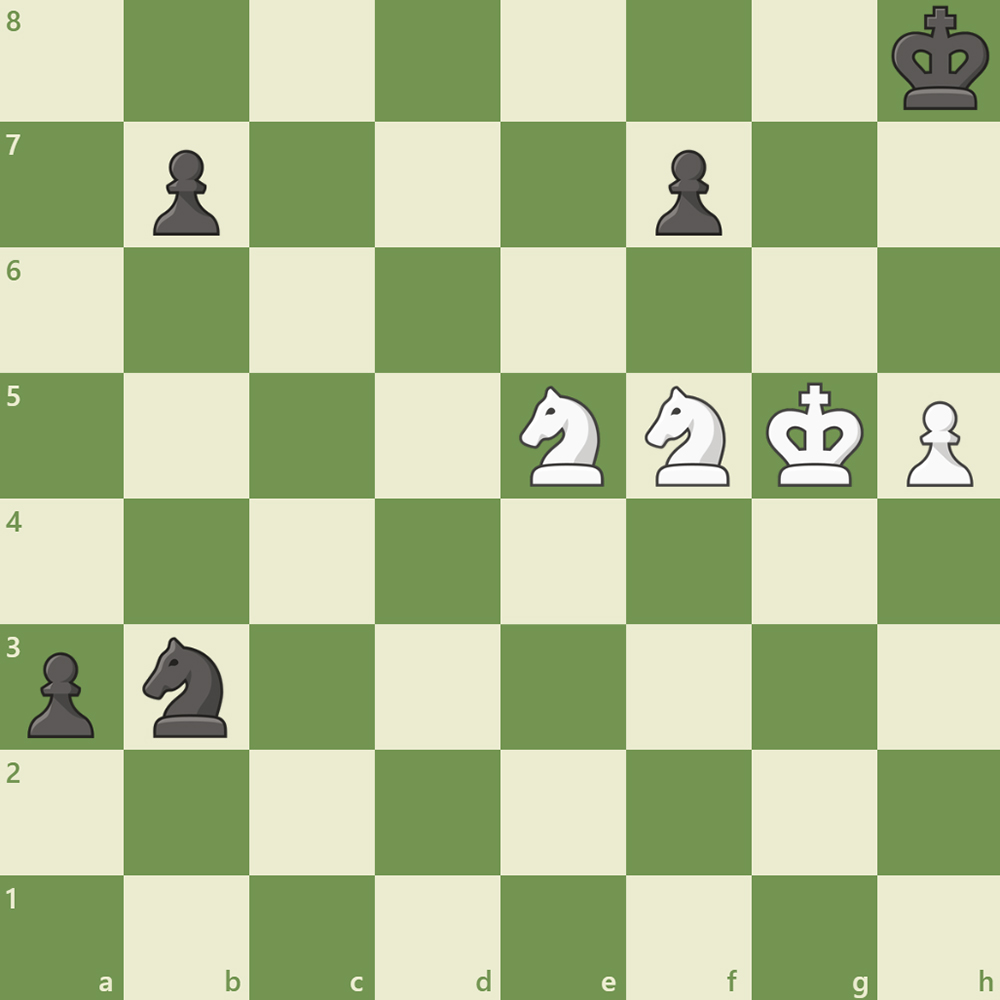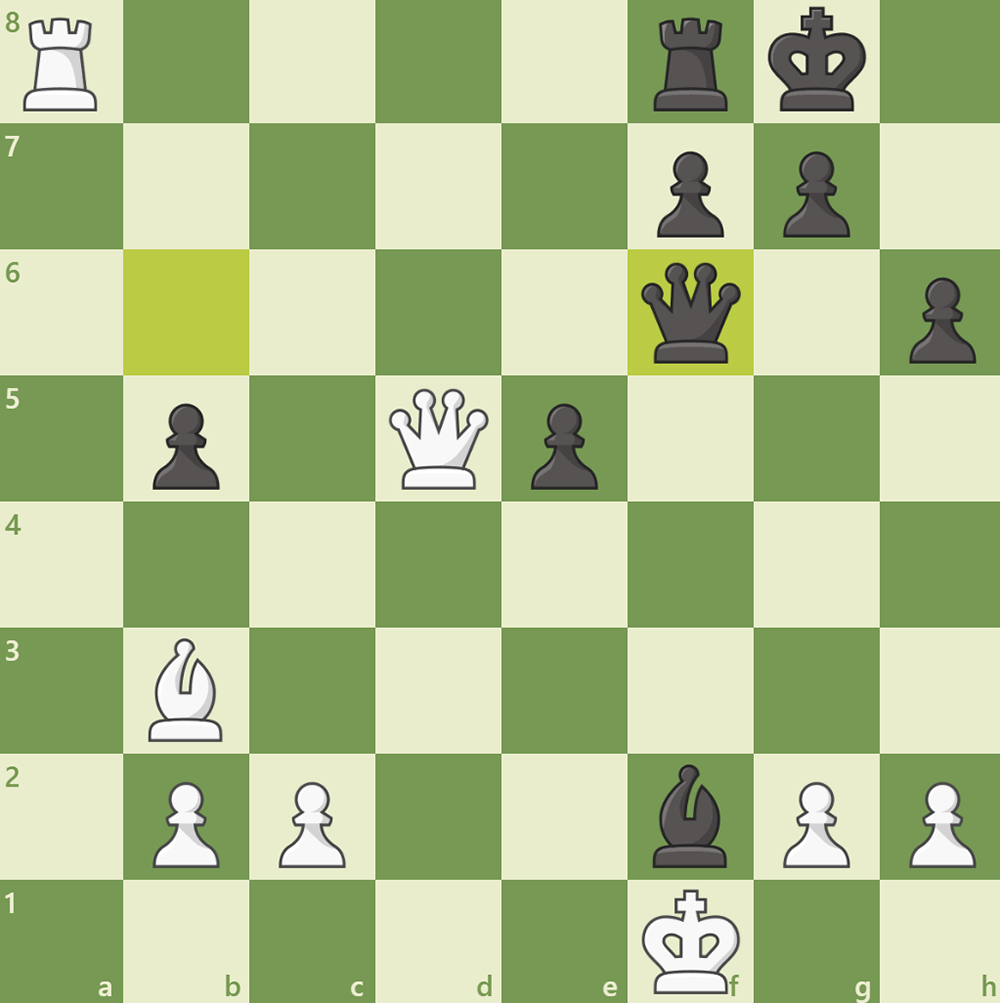
In chess, tactics in the endgame, the final stage of the game in which few pieces remain, are crucial sequences of moves that exploit an opponent’s potential vulnerabilities or convert one’s own advantages into a winning position. This idea is demonstrated in Figure 1, a position in which both sides have three pawns but white has a rook to black’s bishop. Additionally, the white king is attacking the indefensible f5 pawn, the black king threatens the c8 rook and the c7 bishop hits the dark squared pawn on f4. If white simply moves the rook to safety, the bishop will capture the f4 pawn and the position transforms into an endgame that is technically better for white but difficult to win as the bishop is the same color as the black pawns, allowing it to defend the pawns from the white rook. Therefore, the strongest winning tactic for white is to remove the piece that threatens to capture on f4 and defend blacks pawns by sacrificing the rook on c7. After the black king takes back, white is able to capture the pawn on f5 and black is entirely helpless to prevent the promotion of white’s f4 pawn.

Figure 2 is from a game between Grandmasters Kiril Georgiev with white and Chris Ward with black at the 2005 Gibraltar Masters tournament. The position is a minor piece endgame with white’s light square bishop to black’s knight, a significant difference when pawn play exists on both sides of the board as only the bishop has the reach to cover both ends. Additionally, white is up a pawn with the a4, g4 and h6 pawns all hanging. However, if Georgiev immediately captures on a4, black has Nxg4, allowing for play and possible pawn advancement on the kingside, and black’s b and d pawns work together to avert the advance of white’s queenside majority. Therefore, the strongest winning move for white is to resolve both of these issues with the pawn sacrifice 1. c5, removing the queenside blockade posed by the b6 and d6 pawns and opens the a6-f1 diagonal so that the bishop can descend to e2 and defend the g4 pawn. If dxc5, white can begin an unstoppable pawn advance with d6, so Ward continued with 1… bxc5. 2. Be2 Kxh6 3. Kxa4 Kg7 4. Kb5. With the once b4 pawn no longer constraining the white queenside majority, the ‘a’ pawn is left with a clear path forward to queening. As such, after 4… Kf6, Georgiev continued his execution of this plan with 5. a4 Ke7 6. Kb6 Kd8 7. Kb7, shutting out the black monarch from the left corner of the board to secure the progression of the ‘a’ pawn. 7… c4 8. a5 Nd3 9. b4, a finishing flourish that connects white’s queenside passed pawns. Black cannot en passant as that would leave the knight hanging and Nxb4 allows for the Bxc4. Therefore, after 9… Ke8, black is completely helpless to prevent the ultimate promotion of white’s queenside pawns and Ward resigned.

The position shown in Figure 3 is from a game between Alexander I Zakharov with the white pieces and Alexander I Petrushin with black from the 1956 Moscow Olympiad Final-A. White is up a knight for two pawns but blacks a pawn is dangerously close to promoting on a1 while the black king blockades white’s h pawn from reaching h8. However, white can tactically take advantage of the seemingly intelligent positioning of the black king and weave an inescapable mating net, bounding the monarch to his inevitable defeat, with the move king to h6. If black responds with f6, white continues with knight to f7+, king to g8, king to g6 and black cannot prevent the queening of the h pawn that will swiftly checkmate the black king. If instead black were to play king to g8, white has knight to d7, trapping the black king in the corner. White is then able to improve the positioning of his knights and ultimately land a forced checkmating blow. For example, this line could continue as follows: 1. Kh6 Kg8 2. Nd7 a2 3. Ne7+ Kh8 4. Ne5 a1=Q 5. Nxf7#.

Figure 4 is from a game between Grandmasters Bent Larsen and Svetozar Gligoric during the 1956 Moscow Olympiad Final-A. Black is up a pawn with a queen and bishop heavily pressuring the white king along the f file. To alleviate the pressure on the white king and equalize material, the winning move for white is queen takes f7 check, utilizing the pin on the f8 rook to win a pawn and force the trade of all heavy and minor pieces after queen takes f7, bishop takes f7 check, king takes f7, rook takes f8 check, king takes f8 and king takes f2. The lengthy exchange results in a position in which material is equal but black’s b and e pawns are left isolated compared to white’s connected c and b pawns. As both sides activate their kings in the center of the board and advance their pawns, white is ultimately able to transform his queenside majority into a passed pawn that the black king is forced to abandon the defense of the e pawn to prevent its promotion. This allows white to win the e pawn and, soon after, the rest of black’s kingside or queenside pawns and clear the path for the advancement of white’s corresponding pawn due to the poor placement of the black king, leaving it incapable of defending the black pawns or capturing the white ones in time. Larsen went on to exploit the weakness of black’s pawn structure created through the queen takes f7 tactic and win the game.
Ethan Feder is a senior at Yeshivat Frisch, a chess enthusiast, instructor and player. The goal of his column is to teach and discuss chess concepts through example positions, high-level games and relevant puzzles, along with explanations. Feel free to contact him with any questions, suggestions or comments at ethan.feder@gmail.com.










